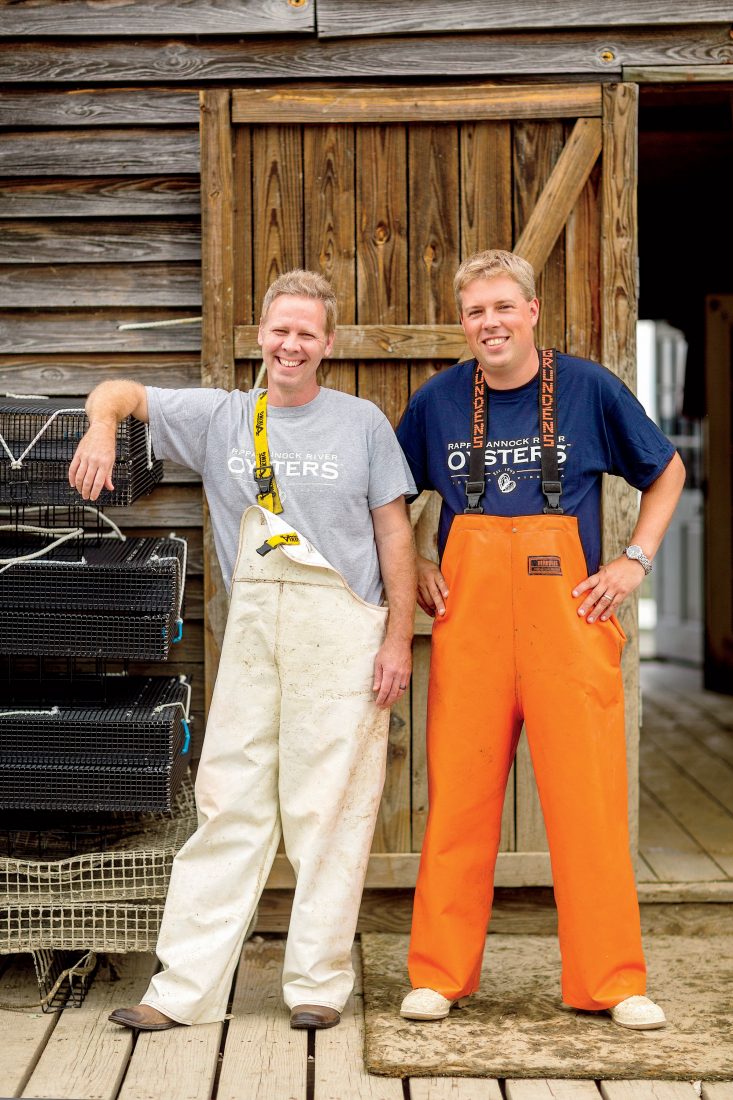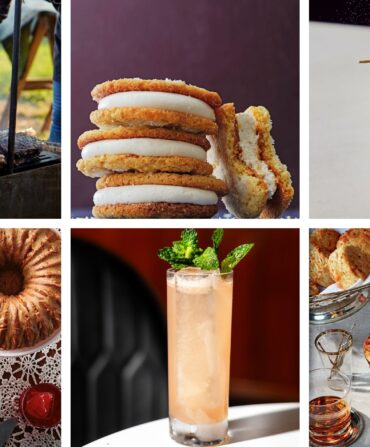It’s after midnight when a golf cart pulls up to the Battery in Charleston, South Carolina, where several big-name chefs, in town for a food fest, are passing drinks in the dark. Travis Croxton steps from the driver’s seat to unload a cooler packed with raw oysters from his family business, located on the Virginia side of the Chesapeake Bay. Soon, faces are slicked with liquor—from both bottle and shell.
Not long ago you would have been hard-pressed to find a chef who’d happily slurp oysters from the Chesapeake. Inconsistent in size and flavor, the bivalves from the country’s largest estuary were typically sold as a pre-shucked commodity. But that grim outlook didn’t stop Travis and his cousin Ryan Croxton from taking over Rappahannock River Oysters, a company their great-grandfather had started in 1899. “We had no idea what we were doing,” Ryan says. “We just didn’t want to lose what our grandfather and his father had created.”
What might have been a disastrous mistake has turned out to be a boon for both chefs and the bay. The Croxtons now sell upwards of 80,000 oysters a week to the half-shell market, counting chefs Eric Ripert and Tom Colicchio as clients. In addition, they’ve recently expanded into restaurants of their own. In 2011, they opened Merroir, an idyllic oyster-tasting bar thirty miles downriver from their great-grandfather’s original property. And this past fall, they launched both Rappahannock Oyster Bar in Washington, D.C.’s Union Market, and Rappahannock in Richmond, a seafood eatery helmed by chef Dylan Fultineer, an alum of Chicago’s lauded Blackbird restaurant.
In its heyday at the end of the nineteenth century, the Chesapeake Bay was one of the world’s most prolific regions for wild oysters. But by the 1960s, decades of overharvesting, disease, and dredging had destroyed the natural reefs. As an alternative, the Croxtons turned to aquaculture, sustainably farming their oysters in cages suspended above the eroded estuary bottom to give them access to the clean water necessary to grow (and taste good). The result is a healthier aquatic environment and superior oysters. “Part of the area’s bad reputation was a lack of consistency, and farming could fix that,” Travis says.

Photo: Jeff Greenough
Fresh Catch
Ready-to-eat selects.
In 2004, the Croxtons harvested their first Rappahannock River oysters, a sweet, buttery variety named for their origin. The pair has since started farming two more varieties—crisp Stingrays and extra-briny Olde Salts. When other local oystermen took note of their success, the cousins were happy to help them convert to farming, too.
“Ryan and Travis reestablished what an amazing place this is for oysters,” says Spike Gjerde, chef and owner of Woodberry Kitchen, in Baltimore. And it’s not just chefs and watermen who are benefiting from their efforts. Oyster lovers across the country can have bushels of the Croxtons’ finest delivered right to their doors. It may not be their grandfather’s method, but Travis and Ryan are pretty sure he’d be okay with that.









